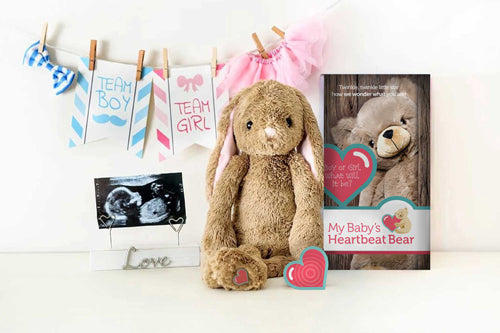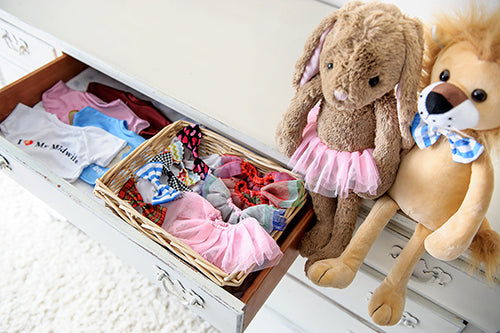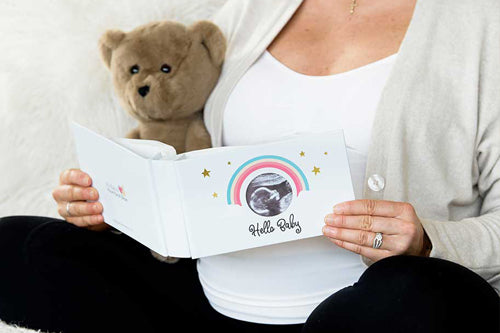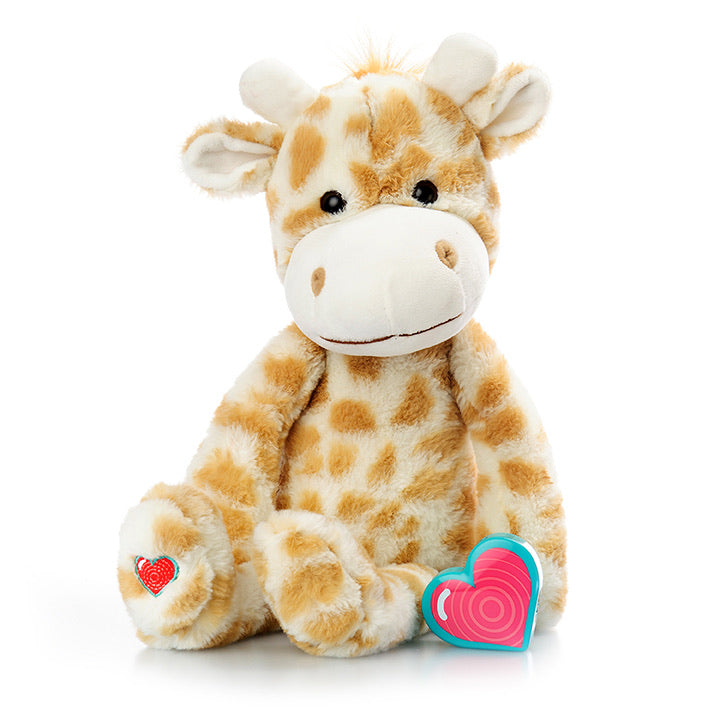Remembering Your Fourth Trimester

Pregnancy is a journey of growth for a mother and baby.
You live the healthiest lifestyle possible during those nine months to yield the healthiest possible outcome: a sweet and strong baby. That, however, is where most books and classes end.
The problem is that our society has gone against a mother’s intuition and has set expectations for these babies who have just entered the world.
For example, sleeping through the night in their own room from just days or weeks old, using every new shiny contraption to hold the baby so parents don’t have to, or the best: not picking up a crying child for fear of spoiling them.
Please ignore these ridiculous comments and pieces of 'advice.'
Trust your gut. A mother’s body instinctually provides what is known as a fourth trimester for both itself and the baby. The fourth trimester is a period of time after pregnancy has ended and when motherhood begins. It is a smooth transition to the world for a baby and a time of healing for the mother.
The Fourth Trimester For a Baby
There are several key elements to helping a baby adapt to the world. Keep in mind that while the baby was busy becoming a baby, several factors played into his environment and daily life. These elements are drastically different once he arrives “earthside.”
Movement
When you were awake, baby was constantly feeling movement in the womb. A laid down baby is typically an unhappy baby. The easiest and most natural way to incorporate movement is by babywearing. You might also love a vibrating bouncer or swing while you take a shower.
Skin to Skin
Skin to skin regulates the body temperature, steadies the heartrate, balances breathing, brings a baby close to the heart, comforts, and soothes. Spend as much time skin to skin as you can during the fourth trimester (and longer! Any fever, illness, cranky mood can be turned around this way).
Being Held/Wearing Baby
Our society generally sticks a baby in a generic “banana hammock” style carrier, if a carrier is used at all. Let’s be real, typically you see parents carrying the carseat everywhere (or clicking the carseat into a stroller without ever moving the infant).
Invest in a good carrier. A ring sling, an ergonomically correct carrier, or learn to wrap. This leaves your hands free, keeps your baby happy, and helps prevent your infant from having a flat head (seriously). Babywearing also presents a great barrier and prevents others from touching, grabbing, or commenting on your little one.
Sleeping Within Arms-Reach
SIDS is scary. SIDS is real. SIDS can happen to anyone.
However, there are a few things you can do to reduce the risk. Placing a baby on his back to sleep, keeping his sleep area free of bumpers, blankets, pillows, and toys, sleeping with a fan on, breastfeeding, and being close enough to touch your baby all lowers the risk of SIDS. It is recommended to room-share (or safely bed-share) for at least the first 6 months.
Deep Bathing
The womb was a warm, amniotic-filled, perfect home. There is a reason that warm baths calm crying babies. Go beyond the wash cloth and sponge bath. Get in the tub with your baby (skin to skin) and fill that sucker up! Hold your baby into the water with his face completely safely above the water. Watch the magic of the bath take over.
Noise
Your baby listened to your heartbeat for nine months. He also heard muted noises, words, and music. Be aware of sounds, either overstimulating noises or unnatural silences that may affect your baby. Use a sound machine or wear baby throughout the day close to your heart. Keep your baby moving and have background muted noises on.
Feeding on Demand
Your baby has never experienced hunger until now. When in utero, he was constantly being “fed” nutrients. Hunger pains are new – and painful – so learn his hunger cues. Nurse him on demand, not on your clock. Look for clenched fists, wiggly movements, bobbing head motion, or fists toward the mouth. These are all signs that he is giving you before he starts screaming, “FEEEEEEEEED ME!!!!”
Outside Fresh Air
There is something that happens to a crying baby when they are taken outside into fresh air. The thought behind this is that there are not many smells inside the womb, but our homes and indoor areas are FULL of odor. The fresh air seems to be enough to cleanse a baby and calm him.
The Fourth Trimester For a Mother
The body just GREW A PERSON over a nine month period of time. You will not heal overnight.
Bleeding (Lochia)
Taking sitz baths can help with postpartum bleeding (known as lochia).
Sitz blend
To 3 cups simmering water add:
- 2 tablespoons comfrey leaf
- 2 tablespoons St. John's wort flower
- 4 tablespoons calendula flower
Turn off the heat. Allow it to steep for 20 minutes. Pour into shallow bath. Add four drops lavender essential oil and two drops cypress essential oil. Mix well to disperse essential oil.
Postpartum Sitz Bath
- 2 parts plantain flower
- part calendula flower
- 1 part comfrey leaf
- 1 part burdock
- 1/2 part violet flower and leaf
- 1 part yarrow flower
- 1/2 part lady's mantle flower and leaf
- 1/2 part lemon balm leaf
Mix well. You can add sea salt to the mixture if you wish. Add approximately one cup of herb and salt blend to six quarts boiling water, strain and add to shallow bath. You can also use as a compress.
Or try the following blend:
- 1 part uvaursi leaf
- 1 part shepherd's purse leaf, seed
- 1/2 part myrrh gum powder
- 1/2 part garlic (Dried or fresh. If fresh, use 1–2 cloves. Use whole; do not cut or smash as fresh oil can be very strong and irritating.)
- 1/2 part comfrey root
- 1/2 part sea salt
Prepare in the same manner as Postpartum Sitz Bath (see above).
Another popular sitz bath blend contains:
- 1 cup sea salt
- 1/2 cup plantain leaf
- 1/2 cup calendula flower
- Use six cups of water.
Hormones
Placenta encapsulation is a great way to help your milk supply, rebalance hormones, and survive the lack of sleep. Your body will be on a hormonal emotional rollercoaster for quite a while after birth. Prepare your partner that you may cry, need extra love or support during this time.
Baby Blues
This is different from postpartum depression. If you feel as though you are suffering from PPD, please contact your doctor. It is important not to ignore the changes that are happening in your body, though. Talking about the emotions, changes, and challenges is one of the best ways to cope with the “baby blues.”
Be at Home
The world continues turning and you may feel that you need to keep up, but the truth is that you need time to heal and bond with baby. Have friends and family come to you often and keep errands to a minimum.
Breastfeed
Breastfeeding helps heal the uterus, stomach muscles, and completes the pregnancy journey for your body. If you do not feel breastfeeding is for you, at least do not rule it out. TRY. Have a good lactation consultant nearby for help. Your milk is made uniquely for your baby; there is no other perfect source of food for your child. However, if there are reasons you cannot breastfeed, talk to your doctor or midwife to formulate a plan for yourself during this time. Kegels, uterine massage, and supplemental herbs can help rebalance the body.
Ask for Help
Don’t try to be a hero. Let a friend fold your laundry.
Most importantly, enjoy this time. By taking things slow and listening to your gut, you are providing the best welcome to the world for your little one, and helping yourself transition, too.
Featured Articles
5 New Year's Desserts to Make With Kids





















